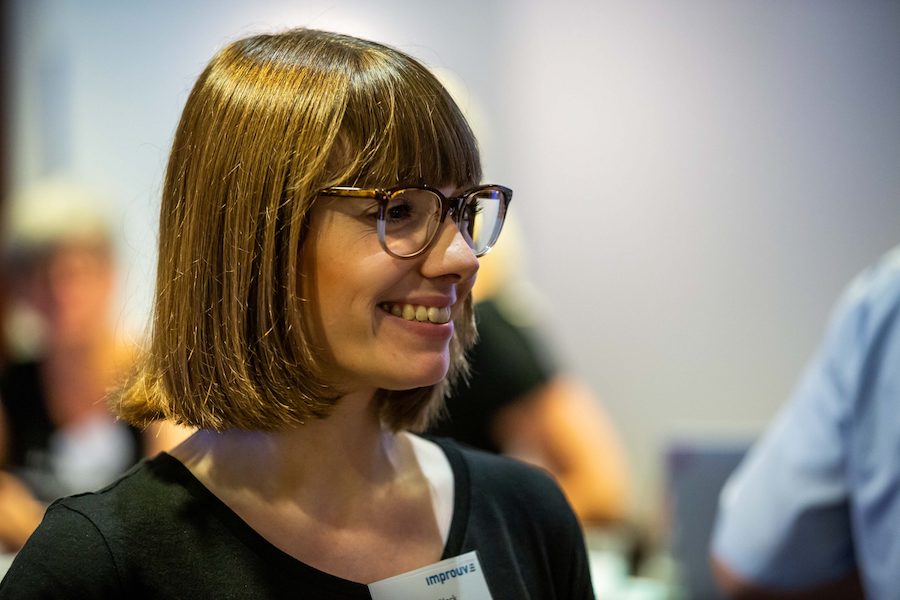Overview
Client: Agile transformation lead for the IT division (approx. 3500 employees); direct report to division management
Approach: Coaching, sparring
Year: 2023 (period: approx. 4 weeks, 1-2 coaching sessions per week)
Industry: Chemicals
After an agile grassroots movement was launched in the company's IT seven years ago, a product organization was created three years ago as part of the digital transformation. In the following years, IT has continuously evolved with various far-reaching measures such as the introduction of OKR and team-based performance. Now the agile transformation has reached a point where a profound change is needed to achieve new levels of effectiveness. In this situation, the Agile Transformation Lead wants a sparring partner to generate new options for action.
My client wants to set up the division in such a way that agility is firmly anchored in the culture. In a mixture of leadership coaching, sparring and guidance, she wants to develop ideas together on what the next strategic step in the transformation could look like.

In several 1-2 hour sessions, we worked together to develop various options for how things could proceed. We examined each scenario to see what effects it could have and how it could be implemented. In the protected environment of the coaching sessions, my coachee had the opportunity to think openly and long-term. She was able to adopt new perspectives. She allowed herself to question old constraints and look boldly into the future.






My coachee is an experienced systemic organizational developer, change manager and agile coach. She has been accompanying her company on its journey for years. Together with her team and the division manager, she has implemented effective initiatives. It is clear that she does not need advice, but rather coaching at eye level, an outside perspective and a joint exchange of experiences that shows her new aspects. This is how we have shaped our collaboration.
We started our collaboration with a detailed description of the situation, the set-up, the organizational structure and the development to date. Our collaboration takes place online, we use Miro as a collaboration and visualization tool. And create a shared image. The result is more than just writing down the history: by asking questions, I realize which topics generate resonance and have initial indications of relevant topic areas.
Clarifying the assignment as the basis for successful, trusting collaboration is always the first step. This achieves so much: expectation management (in this case, a mixture of coaching – sparring – exchange of experience is required), clarification of objectives and communication that is characterized by collaboration and based on trust.
The goal of the coaching is the next level of agility: anchoring agility sustainably in the department.
Recurring topics in the sessions were “Centralization vs. decentralization”, “Sustainable anchoring”, “Role of managers in the transformation”, “Understanding stakeholder needs”, “Story telling as a leadership and transformation skill”. My coachee addressed these topics at various points and derived options for action for herself and her department.
As an introduction to the exploration and divergence phase, I have prepared a collection of different setups of agile transformations:
With this collection of ways in which companies organize their agile transformation, we took the next step. My coachee worked out three possible scenarios for her area.
In the convergence phase, we develop three very diverse approaches to the transformation strategy – and challenge them from a wide variety of perspectives. We use the scenario technique as a proven tool for organizational and strategic development. For each scenario, we design an organizational setup and examine it with regard to our goal: to anchor agility in the company in the long term. We also take into account the development opportunities and necessary skills of key people as well as the willingness to transform.
We discussed pros and cons for each scenario and went through possible consequences.
Based on this, my coachee decided on a forward-looking path that was based on a new way of thinking and went beyond the boundaries of her own IT department.
What my coachee always thinks about: what can the development paths of colleagues (Scrum Masters, Product Owners, Agile Coaches and Trainers, managers) look like? Where can new business units be won over as stakeholders in order to anchor new ways of working and procedures broadly in the company? She regularly obtains feedback from her team and from the department.
Order clarification as the basis for successful, trusting collaboration in transformation consulting
Organizations are complex systems - the scenario technique is a helpful tool from organizational development to design possible future scenarios.
Systemic coaching is about developing new perspectives, strategies and guiding principles for yourself and integrating these into your own actions. Our coachees are and remain experts for their system.

Our offer is as individual as your task. Talk to us, we listen. We take the time to understand your situation. Holistically. Without obligation. Promise.
Arrange a consultation today.
Case study of a SAFe implementation that led to a shared product vision and team spirit.
Case study on how transparency and self-organisation ensure sustainable change.


Artikel wurde in den Warenkorb gelegt.